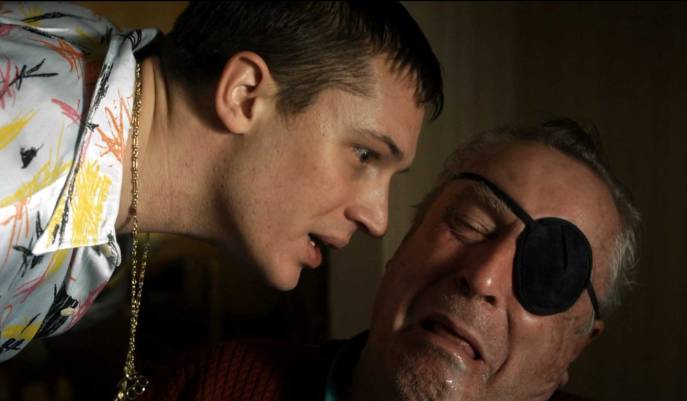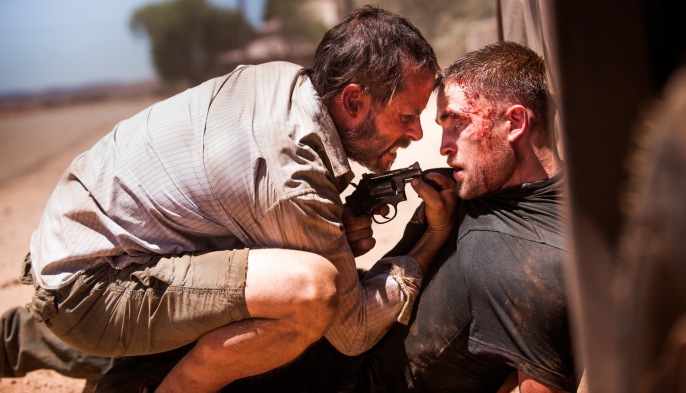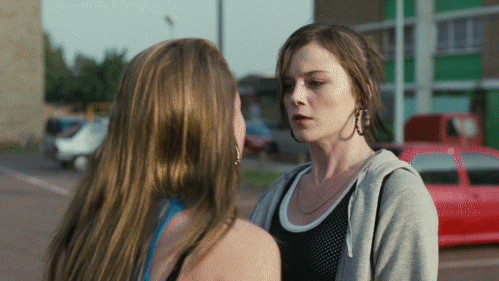If you dig dark cinema and/or frequent this blog, odds are you’ve already seen such Netflix-sponsored classics as I Saw the Devil, Tell No One, Headhunters, Blue Ruin and Stake Land. If not, refer back to this list, which contains arguably 18 of the best films and series that run in that vein of bleak, thrilling morbidity.
What’s compiled below is a list of slightly inferior (in some cases—not all) modern flicks that took a lot more digging to find than the aforementioned titles. In other words, they’re mostly lower-budget, less hyped in critical and social media forums, or simply just overlooked. And if you feel this list is slightly short on horror, just refer back to this post.
If you’re new to the blog and the list seems a little thematically erratic, I’ll just reiterate that the focus of this site is to recommend movies not from one particular genre, but rather a series (horror, crime, thriller) which are all connected by an undercurrent of grim suspense. (See: my first post where I equate bleak cinema with ASMR.) This 26-part novella is also my attempt to repent for blogging infrequently of late, and thus offering you a laundry list of some of the better stuff I’ve watched over the past half year.
And the nominees are…
Almost Mercy

The main reason I held off from writing a longform post on this is because it’s a little smarmy for my tastes. Essentially, depressed, bullied loner boy meets insanely hot badass outsider chick (Danielle Guldin). Friendship ensues, and so does mass killing. Think White Rabbit (farther down the list), but with more of a Heathers / Ginger Snaps / Horns vibe. My other comparison would be an amalgam of We Need to Talk About Kevin, Gus Van Sant’s Columbine-inspired Elephant and Jennifer’s Body, with a tone and sardonic wit more in line with that Diablo Cody flick than the serious nature of Kevin and Elephant. Almost Mercy is definitely a lot of fun as 90s throwback black comedy—just be prepared for more tongue-in-cheek gore than actual horror or substance.
GRADE: B / B+
IMDb: 6.2
Big Bad Wolves

It makes absolute sense why, in 2013, Quentin Tarantino called Big Bad Wolves—an Israeli murder-torture revenge thriller—“the best film of the year.” I don’t say that because Wolves is a profound and overlooked piece of filmmaking. I say it because people with big egos generally tend to like what they see in the mirror, and Wolves is essentially a reflection of everything QT’s worked to stylistically cultivate over the past few decades. If you are a die-hard Tarantino fan, you might very well agree with him. If, like me, you think he’s gone into hammy, self-parody ever since his last great film (Jackie Brown), you might be of a couple minds.
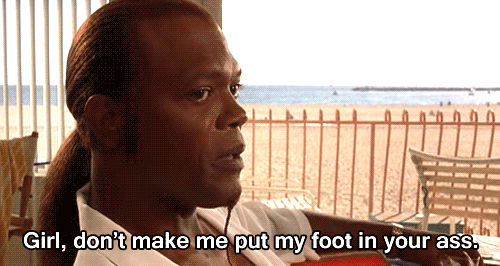
Before the Gosling meme, there was this bad muthafucka…
That’s not to say that I don’t think Wolves is a very clever and entertaining thriller with some wonderful style and plot twists. It’s just that QT’s character-as-caricature formula—wherein corny jokes play substitute for human emotion—seems just a little incongruent with a film predicated on child rape, child murder and agonizing revenge torture.
I guess I should briefly sum up the main premise here, which entails the father of said beheaded child and a vigilante cop using all means necessary to force a confession out of a potential perp in a secluded farmhouse basement. Directors Aharon Keshales and Navot Papushado even give a wink to Pulp Fiction as the man is interrogated, using one of QT’s favorite tools for going “medieval on his ass.” I know fans of this blog might have a gripe with me calling this film insensitive, but it just seems that at the very least, the gravity of such vulgar material becomes rather implausible and divorced from reality in such slapstick kid gloves. In all, it feels like this film was created for the exact cine-sadist audience Michael Haneke was confronting and condemning in Funny Games.
OK, OK, I’ve cleared my conscience. If you can somehow cast aside the flippantly portrayed depravity this film addresses (not a small task), it then becomes a perfectly paced suspense-revenge flick, full of black humor, strong camerawork, memorable performances and some fantastic twists. It also gets points for the best use of Buddy Holly’s “Everyday” this side of We Need to Talk About Kevin.
Quite simply, Big Bad Wolves is a love it or loathe it movie, and I find myself caught somewhere between the two poles. But I can’t deny that it’s an impressive piece of filmmaking.
GRADE: B+
IMDb: 6.8
The Canal

When I put together a list of some of best lesser-known modern horror flicks on Netflix (see link in intro), The Canal was my glaring omission. Perhaps I held off on watching it due to the corny cover art on Netflix that makes it look like a generic, direct-to-DVD snoozefest. Or maybe it was the 5.9 score on IMDb (Reminder to self: IMDb scores are good signifiers for a film’s caliber in some genres, but they are to be distrusted like a back-alley three-card monte dealer when it comes to horror).
In fact, this film is so good that I’m doubling back on my claim that The Babadook was the best horror film of 2014 (granted, it was a pretty shitty year for horror). So what’s the deal with The Canal? Premise: An Irish film archivist moves his wife and son into a creepy old house located on a… canal, of all things. With a heavy tip o’ the cap to The Shining, our man starts losing his mind a wee bit, especially when he finds some films at work that reveal his house to be the scene of a century-old murder wherein a man killed his wife and kids.

“I think my dad’s gone craaazy!”
This familiar narrative I just described is pretty much where The Canal stops adhering to any genre conventions. I’ve stated on this blog that haunting movies generally don’t do the trick for me (just leave the fucking house, already!). But this one is more refreshing and palpable, if only because the majority of the film doesn’t take place in the house, and we don’t have to wade through an hour of creaking doors and power outages to get to the real meat. Moreover, The Canal operates on a heady, multilayered plain of psychological dementia that enters into a possessed mind in one of the most convincing—and therefore terrifying—ways I’ve encountered. Trippy, manic and skillfully crafted, the lack of recognition for director Ivan Kavanagh’s indie masterpiece is criminal. Queue it up without further delay.
GRADE: B+ / A-
IMDb: 5.9
Blue Caprice
Based on a wave of seemingly motiveless sniper killings that went down near Washington D.C. in 2002, Blue Caprice is carried by an air of unnerving tension as well as a sense of unavoidable dread. It brings to mind several sources, most notably Peter Bogdanovich’s Targets (1968), loosely inspired by Andrew Clark’s 1965 freeway killings. In both films, random “targets” are sniped by a psychopathic killer who seems to have little more incentive for the murders than his own psychopathy.
Blue Caprice also employs a father-and-son-like power dynamic, as an embittered man brings a homeless youth into his care, only to brainwash him into being a cold-blooded killer. In this sense, the film evokes both Beasts of No Nation and the character of Chris, the trigger-happy corner boy from The Wire. The senselessness of the entire drama is conveyed as the killing spree unfolds almost nonchalantly—more as a brief footnote to the inexplicable psychopathy of these killings than as a crescendo or climax. The strongest feature of this film is without a doubt the maniacally icy and dynamic performance of Isaiah Washington. In all, Blue Caprice’s characters are fleshed out, but their criminal psyche and murderous underpinnings beg more exploration. Perhaps that makes sense, however, given the utter senselessness of their actions.
GRADE: B / B+
IMDb: 6.0
Cartel Land

One of my favorite films on Netflix streaming is El Infierno, a Sam Peckinpah-tinged tragicomedy dealing with the societal horrors of Mexican narco culture. In my post on that film, I also recommended Narco Cultura, a good documentary on the subject in its own right. Surpassing that, however, is Cartel Land—a doc that brings a retrospective “how the fuck did they get that footage” type feel to a war playing out between druglords and an army of ordinary citizens fighting back against tyranny. Makes sense why this was just up for Best Documentary Oscar.
GRADE: A-
IMDb: 7.4
A Company Man
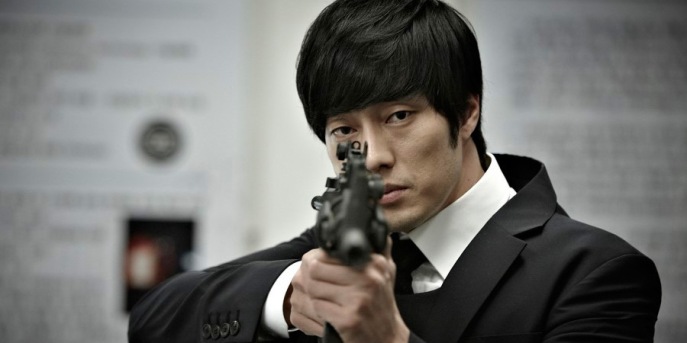
Netflix’s most impressive foreign subgenre catalogue is arguably that of South Korean revenge thrillers. Oldboy and I Saw the Devil are the best of these, but they’re just part of a film movement that churns out great products at a breakneck clip, and A Company Man is a damn fine addition to the canon. Drawing a parallel between the corporate servitude of the Asian “salaryman” and the rigorously structured life of a hitman, Company Man excels as a bleak and action-packed, murder-revenge tale. There are a few other South Korean flicks on this list I’d check out before it (namely, A Hard Day), but if you’ve enjoyed the genre’s more popular offerings, you should be pleasantly surprised by this low-budget and high-grade counterpoint to Assault on Wall Street.
GRADE: B / B+
IMDb: 6.7
Darkness on the Edge of Town
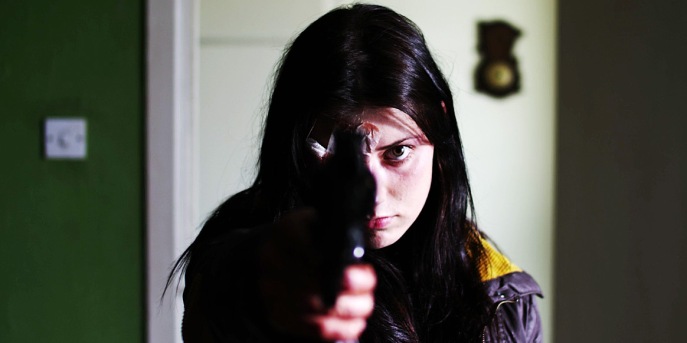
This one’s a bit like that moody, bleak and cinematographically impressive country noir stuff that’s been coming out in droves of recent (Joe, Blue Ruin, Shotgun Stories, The Living, Winter’s Bone), but with more of a distinctly Irish feel. And not just in gorgeous shots of the 40 shades of green that canvass the hills of North Kerry. There’s a contemplative, almost mystical and dreamlike quality to the film, especially at its outset. The story revolves around Cleo, a fiery-tempered juvenile delinquent (Emma Eliza Regan) looking to avenge her sister’s death by going door to seedy door to find sis’ killer. Cleo is handy with a hunting rifle, and her house calls to shifty tinker drug dealers makes her character seem rather like a brogue-bearing mashup of Jennifer Lawrence’s character from Winter’s Bone and Katniss Everdeen. The film, also about friendship and duplicitousness, is nothing groundbreaking, but at the very least it’s a nice, little anti-Thelma and Louise b-movie with slick camerawork and an impressive performance from Regan.
GRADE: B
IMDb: 6.1
Dark Was the Night

In all honesty, this is probably the worst film on this list (OK, maybe with the exception of The Shrine). It starts with a hammy scene of mysterious terror that you’ve seen open any number of horror movies. But wait! From there, the next hour or so of Dark Was the Night ventures into a suspenseful and ominous creature feature that elicits a genuine fear of the unknown through a rather original premise and a lot more showing than telling.
Kevin Durand—easily recognizable from being typecast as the brawny asshole in just about every recent Hollywood action flick—delivers a complex performance that shows he’s more than just a b-movie Arnold. Sure, the main themes are trite and have been done ad nauseum, but the vast majority of the film delivers on good, old school suspense-horror (consider it a worthwhile M. Night Shyamalan flick, if there is such a thing). As for the payoff—well, that’s probably why you haven’t heard much about this movie. But sandwiched between two short and shitty bookends is a very compelling b-horror flick. I won’t say more other than that with a budget of about a million more and a few kinks worked out, this could have been a classic. And it’s always fun to see the great Nick Damici pop up in a horror flick, no matter how small the role.
Grade: B-
IMDb: 5.6
A Hard Day

Combine the suspense and breakneck pace of Headhunters with the corrupt cop cat-and-mouse game of Infernal Affairs. Package it inside the South Korean murder-revenge template. Throw in a dash of Walter White-level maniacal crisis and a Michael Myers-esque killer and, well, you essentially have the recipe for A Hard Day. I’m actually surprised this movie doesn’t get mentioned more when the topic of South Korean “han” films arises and the ingenious, usual suspects are named (I Saw the Devil, Oldboy, The Chaser, The Man from Nowhere, etc.). If not up to those high standards, Hard Day is at least in the same ballpark. One of my highest-recommended flicks on this list.
GRADE: B+ / A-
IMDb: 6.7
Jack Strong
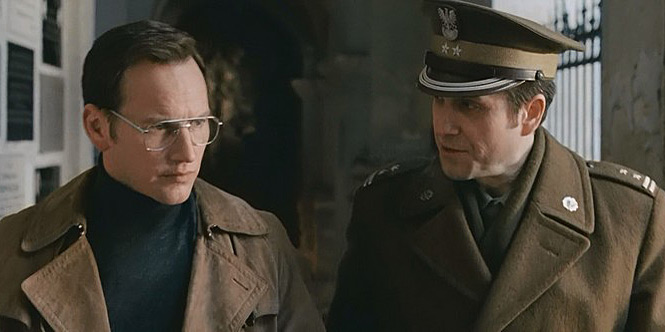 Wait, I’m fucking serious: Despite being marketed with a poster that looks like some lowbrow Tom Clancy political conspiracy schlock and having a title that only furthers this notion, Jack Strong is actually a very intelligent and compelling spy thriller. And that’s because it’s the exact opposite of everything its Netflix thumbnail connotes. For starters, Patrick Wilson (whose face takes up most of the Jack Strong promo poster) actually has very little screen time in the film. Jack Strong is also largely in Polish and Russian, with English subtitles. While it may look like a low-budget rip-off of The Sum of All Fears, it’s really more in the tradition of heady espionage flicks like The Debt, Citizen X and Munich (I’m not gonna mention Tinker Tailor Soldier Spy because I still have no idea what the fuck transpired in that movie). Thrilling, suspenseful and very well acted, one need simply ignore its awful marketing, and a very good film lies beneath.
Wait, I’m fucking serious: Despite being marketed with a poster that looks like some lowbrow Tom Clancy political conspiracy schlock and having a title that only furthers this notion, Jack Strong is actually a very intelligent and compelling spy thriller. And that’s because it’s the exact opposite of everything its Netflix thumbnail connotes. For starters, Patrick Wilson (whose face takes up most of the Jack Strong promo poster) actually has very little screen time in the film. Jack Strong is also largely in Polish and Russian, with English subtitles. While it may look like a low-budget rip-off of The Sum of All Fears, it’s really more in the tradition of heady espionage flicks like The Debt, Citizen X and Munich (I’m not gonna mention Tinker Tailor Soldier Spy because I still have no idea what the fuck transpired in that movie). Thrilling, suspenseful and very well acted, one need simply ignore its awful marketing, and a very good film lies beneath.
GRADE: B+
IMDb: 7.2
Kidnapped (Secuestrados)
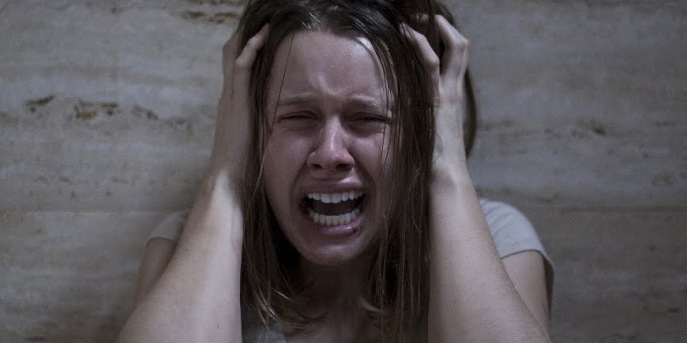
Fuck, this one is bleak and grotesque. I mean, while not exactly A Serbian Film, it makes the Liv Tyler flick Strangers look like Home Alone. And it’s not even a horror film. Just a home invasion movie that takes us into the inner recesses of a horrific real-life situation, and then begs the question, “How much fucking worse could it get.” The thing is, it’s all very convincing, believable and well-acted. And I think calling Kidnapped “torture porn” would be a disservice to its vivid realism. I just don’t know why the hell anyone would be compelled to make this film. But it’s certainly better than Eli Roth’s Knock Knock, and if you liked Funny Games and are a cinematic sadist, you’ll most likely eat this shit up.
GRADE: B
IMDb: 6.5
Last Shift

Channeling the cult-classic Session 9, Last Shift brings us into the world of Jessica (Juliana Harkavy), a cop working her first shift. Of course she just happens to look like the half-sister of Jessica Alba and Hope Solo. Of course the shift is run alone. At night. In a precinct house that’s haunted by the spirit of a mass murder clan! Last Shift is one of those low-budget, sleeper Netflix horror titles that more than does the trick in terms of delivering continuous suspense and some good visual and psychological thrills. In fact, I’d go so far as to place it in the top ten horror movies of 2015. As a horror buff who is typically bored by paranormal films, this one easily kept my attention throughout. An impressive flick from up-and-coming horror director Anthony DiBlasi.
GRADE: B / B+
IMDb: 5.7
The Living

If we can consider Blue Ruin, Joe, Winter’s Bone, Cold in July and Shotgun Stories as cousins related by the blood of country noir, than consider The Living their slightly jaundiced offspring. Director Jack Bryan takes the age-old formula of drinking, heartbreak, mayhem and embittered rednecks killin’ on other nearby rednecks for fuckin’ with their kinfolk. He then hands it over to a talented cast of horror and outlaw movie vets (including a few faces from Justified and House of the Devil’s Jocelin Donahue) and basically lets them shoot it out. While there’s a lot of good bleak-as-fuck hilljackery commencing here, veteran character actor Chris Mulkey absolutely steals the show as a two-bit philosopher hitman who’s just a few screws short of being a white trash Anton Chigurh. If you want bleak and backwoodsy, look no further.
GRADE: B / B+
IMDb: 6.3
Man from Reno
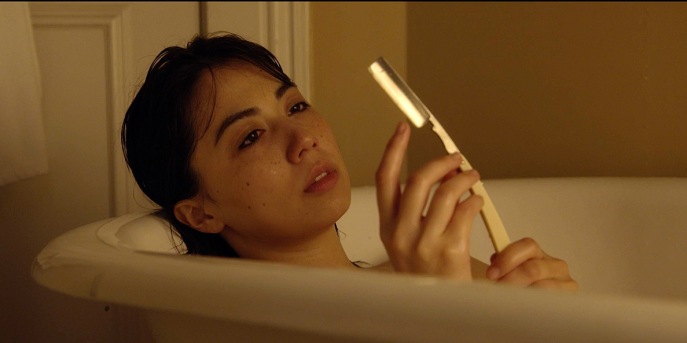
Man from Reno is, without a doubt, the best film ever made about the treacherous Japanese-British-San Francisco rare turtle smuggling syndicate. That absurd premise is what our heroine, popular detective novelist Aki, finds herself in as she struggles with a personal crisis and the task of cranking out her last opus. Then there’s the dark and handsome gentleman lover Akira (Kazuki Kitamura from Kill Bill and Killers—we need more of this guy), who’s got something to do with the whole shebang. Piecing it all together is a local detective working a murder case—the great character actor Pepe Serna (Scarface), stealing the show as a humble, aging version of Walt Longmire.

Pepe Serna on the wrong side of a chainsaw in Scarface
So yeah, there’s a lot going on here, almost distractingly so (and sometimes the puzzle pieces collide a bit too quickly). But it’s all worth the slow grind. In the end, Man from Reno is a bizarre, multinational cinematic anomaly; equal parts Hitchcock and The Killing. And speaking of the latter, Man from Reno’s bleak Pacific Northwest cinematography brings a mood and visual flair that are as much a character in the film as any player. If you liked the Al Pacino and Christopher Nolan flick Insomnia, definitely check this out.
GRADE: B / B+
IMDb: 6.9
Mea Culpa

Mea Culpa—or as I like to call it, A Walk Among les Tombstones—is the type of gritty cop thriller that could easily rake in box office bucks with a Liam Neeson remake. The film opens with an older man in short shorts on the beach with his beautiful, much younger wife. The message here, I believe, is that it’s just another day in France.
Such sunny overtones quickly fade. A drunk-driving accident leads to a career and marriage flushed down the drain. It also leads to buddy-cop partners who were once thick as thieves now distanced by worlds of misery. But when a child is witness to a gangland murder, our fallen anti-hero must pick up the pieces in order to save his family—and perhaps even regain his sanity.
There are heavy undertones of Taken, including seedy Eastern European thugs and impromptu death-match boxing in dark warehouses with knives and towel-wrapped hands. I will say Mea Culpa suffers a bit from the old not-killing-the-bad-guy-when-you-have-the-chance syndrome, but it does the trick for a tense and action-packed thriller. Consider it the poor man’s Tell No One.
GRADE: B
IMDb: 6.1
Mystery Road
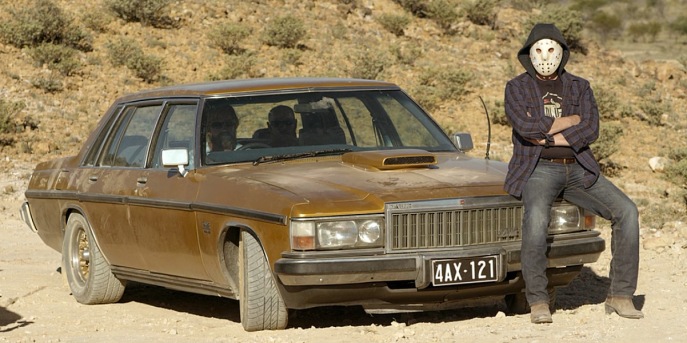
Apart from what’s going on in South Korea and the slew of “country noir” films I can’t stop talking about, Australia has one of the stronger bleak, murderous film movements at the moment. Mystery Road—a slow-burn detective thriller about an Outback sheriff trying to both solve a murder and navigate systemic and race-fueled corruption—follows in the rich tradition of The Rover, The Horseman, The Proposition and Animal Kingdom, to name a few. Its existentially bleak, ponderous view of the Outback as expressed through vivid cinematography and minimalist dialogue is part of what makes this film compelling, and creates for a bit of an odd hybrid between Spaghetti Westerns, Samuel Beckett plays and the gonzo Ozploitation movement of the 1970s. It needs to be said that Mystery Road certainly puts the “slow” in “slow-burn,” but if you can dig a crime movie that’s predicated as much upon mood as it is upon plot, this one is certainly worth checking out. Bonus points: It also has a great side role from Hugo Weaving, as well a finale that makes up for the turtle’s pace of the whole affair.
GRADE: B
IMDb: 6.4
No Tears for the Dead

As I said in my original post on the South Korean revenge-murder thriller No Tears for the Dead, “ It might not have the depravity or sophistication of some han classics, but you’d be hard-pressed to find a more exhilarating foreign popcorn flick made in the past few years.” Seriously, this one gives the first three installments of the Die Hard series a run for their money. There’s nothing all that heady here (it’s more explosion-enhanced, shoot-’em-up blockbuster fodder than the grim glory of South Korean classics like I Saw the Devil and Oldboy). Still, director Jeong-beom Lee’s folllow-up to The Man from Nowhere impresses as a non-stop visual spectacle, and is buoyed by an all-star cast from South Korean revenge cinema. If you’re a fan of the Vengeance Trilogy but are simply in the mood for sheer entertainment on a more brainless level, No Tears is a whole helluva lot of fun.
GRADE: B+
IMDb: 6.7
On the Job

Probably among my top five within this list, On the Job is a Philippine prison-gangster flick that toes the line between drama and thriller. That doesn’t mean it’s by any means slow—it’s just a more artful (and well-acted) affair than some of the other stuff on here. If you want some context, combine the coming-of-age and coming-to-power story of Un Prophete (man, that was one of the best films on Netflix), the interwoven, seedy fabric of Amores Perros, and the bleak Philippine crimescape of Metro Manila. And seeing as On the Job details the dynamic of two generations of assassins and their worldly troubles, perhaps a non-comedic take on In Bruges. All the rest you need to know about this film is that it’s about hitmen who have a deal with a political mob to be secretely released every now and then in order to pull of high-profile murders. Oh, and that it’s a damn good piece of modern crime cinema.
GRADE: B+
IMDb: 7.0
The Seasoning House

This is one of those weird and really good gems that just got buried in the ether of Netflix; the kind that never popped up in any “because you liked” lists and took me half an hour of mindlessly browsing to happen upon. Perhaps that’s because it’s a pretty damn difficult film to market. Premise: A deaf-mute girl in The Balkans is abducted into a military sex-slave house after watching her family brutally murdered by soldiers. She uses her wiles to avoid death at the hands of her captors, while simultaneously coming to the aid of her heroin-fed sex-slave counterparts. Doesn’t exactly scream date-night, does it? And it also isn’t really horror, so you can’t just slap a ghoulish image on the front and get traffic that way (see: The Canal).
OK, now consider that extremely fucked-up premise being executed to near-perfection; no torture porn, no exploitative thrills at the expense of of a very serious and evil situation. Simply an engaging thriller with undertones of bloody revenge on par with what you’d expect out of a South Korean “han” film. For those who can stomach it, Seasoning House—actually a British film—is suspense and terror at its finest. Rest assured, you will never want to visit The Balkans.
GRADE: B+
IMDb: 6.1
Scenic Route
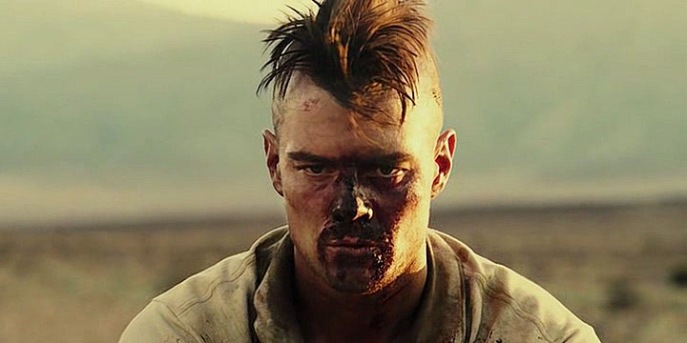
Wait, Josh Douchehamel made a good movie? I thought he was only supposed to star in Katherine Heigl flicks in which Katherine Heigl realizes her life sucks and then she meets Josh and realizes her life doesn’t suck, and then they go through a period that sucks, and then things don’t suck again. But no, Scenic Route is actually a pretty damn-entertaining flick, thanks in part to an ambitious and humorous script from Kyle Killen. Premise: a cleaned-up, dumbed-down ex-musician shackled by a white-picket-fence existence meets with an old stoner buddy, who’s the same lout he was when they used to hang. Road trip commences. Car breaks down in the middle of nowhere. Bros are stretched to the limits of their friendship and sanity. It’s kind of like that movie Gerry with Matt Damon, except that I didn’t feel like I swallowed a handful of Ambien ten minutes into watching it (fuckin’ a, Gus Van Sant, fuckin’ a…). I’m not saying Scenic Route is anything existentially groundbreaking, but it’s just really surprisingly good for a movie starring Josh Duhamel, and you could do a lot worse in terms of survival flicks.
GRADE: B
IMDb: 6.5
The Shrine

As I’ve said before, good horror flicks are few and far between. And I can’t highly recommend this one until you’ve gone through the 30 or so other modern horror films I’ve suggested on this blog. But worth your time if you’re a horror fan? Yeah, it at least holds that standard.
The premise is even a bit more creative and new than a lot of the stuff popping up these days: An American journalist, her photographer boyfriend and her intern travel to a remote Polish village to investigate a series of odd tourist disappearances. Combining elements of Devil’s Pass (watch that on Netflix over this if you haven’t seen it), Hostel and any number of possession films, Shrine at least creates an interesting and multilayered narrative. There’s even some cinematographically intriguing segments shot in the eerie mist of Polish hill country. Why many of these are clearly shot in front of a green screen is a mystery, and adds an unnecessary element of b-movie laziness. And as a former journalist, I’d rather not even get into the financial implausability of a small-time journo living in a high-end condo and flippantly buying three last-minute transcontinental flight tickets on her own dime simply because she has a story hunch. But there’s some decent special effects here and enough ambitious thrills and chills to at least merit a gander. I’ll just reiterate that this one’s low on the list and I’m mainly just throwing it in here for hard-up horror fans.
GRADE: B- / C+
IMDb: 5.6
Suburra

Damn, this is a great movie—probably the best on this list. I love how the opening scene cuts from a boring Italian legislative session to a neon-lit mansion bumping M83’s club-classic “Midnight City” (arguably the most MDMA-conducive song ever created). From there, the tone for Suburra is set, and it’s one of a cross-section of corrupt humanity overlapping into one another’s seedy, carnal and ultimately deadly worlds. The idea of intersecting narratives tied together by some intrinsically morose fate certainly brings to mind the early work of Alejandro G. Iñárritu (see: Amores Perros, 21 Grams, Babel), now probably the most lauded director on the planet.
And as the scandalous lives of a corrupt politician, a gung-ho mobster, a nightclub promoter, a beautiful prostitute and the old guard of gangsterism clash in and around modern-day Rome, the movie also delves into some of the bleak Christian themes Iñárritu explored, especially in Amores Perros. Suburra is divided into daily chapters, with each one being prefaced by text signaling a countdown to “the apocalypse.” The true nature of this apocalypse is more existential and character-related than it is literal, but it would be hard to argue that the movie is, on some levels, not a story about the descent and end of mankind.

“It’s the end of the world… might as well double up!”
Fans of Nicolas Winding Refn’s Pusher series will most likely love this as well, as it delves into the same neon-lit, trance-music soundtracked netherworld that brought a surreal mix of doom and glory to those movies. It’s worth noting that this is somewhat of a companion piece to the great Italian slum-gangster flick Gomorrah, made a few years prior, as Suburra’s director went on to turn that movie into a TV series. From a cinematographic standpoint, however, Suburra is an improvement on its predecessor. Oh, and a final note: There’s a climactic scene here that rivals the horsehead scene in Godfather. Just sayin!
GRADE: A-
IMDb: 7.5
Uncle John
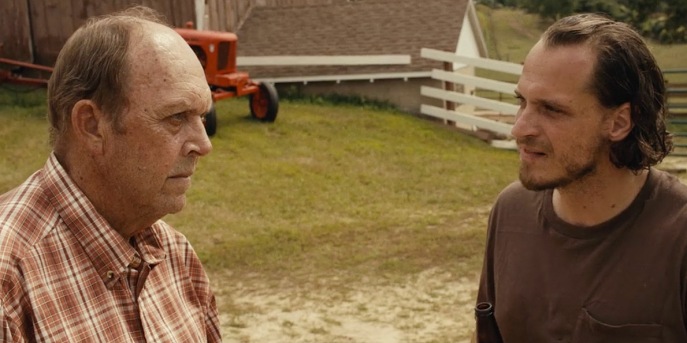
I know nothing about the fresh-faced, first-time filmmaker Steven Piet, but if I had to guess one thing about him I’d say he’s has seen a little film called Blue Ruin. My second guess on Mr. Piet would be that he’s seen a film called The Living. I’d also venture that he’s probably seen David Gordon Green’s Joe and Jim Mickle’s Cold in July. Whether Piet saw any or all of these films before creating Uncle John? I’d also guess in the affirmative, but that in no way means that Piet’s feature debut isn’t a damn good foray into country noir-ish territory in its own right. It’s also arguably the most “Midwestern Nice” movie since Fargo.
A split narrative follows both the budding workplace romance of two typical city millennials and the boy’s titular uncle and father-figure, a farmer living a few hours (and a few worlds) away from them. John is a good, plainspoken Midwesterner who works hard and meets a group of similarly Midwestern chatty-Cathy buddies for coffee every morning at the local diner. But of course, he’s hiding a dark secret. The performances of John Ashton as Uncle John and Ronnie Gene Blevins as essentially the same character he played in the movie Joe are much more compelling than what’s going on with nephew and his office hottie. Still, Piet’s use of a split narrative to contrast the safeness and sterilization of one generation with the cruder, hands-on know-how of a bygone era is—despite being a bit heavy handed—an effective tool for conveying how dull and sheepishly naive your average Millennial is.
GRADE: B+
IMDb: 6.3
When Animals Dream

To avoid spoilers, I’m not gonna classify the subgenre of this slow-paced and thoughtful Danish horror flick. That said, when its main character, Marie (Sonia Suhl), starts growing weird patches of hair on her body, the gist becomes clear rather quick. I want to re-emphasive that “slow-paced and thoughtful” aspect—it’s not in an artsy fartsy way that people will either love or hate, as was the case with A Girl Walks Home Alone at Night. It’s more about combating demons and conspiratorily safeguarding evils within a family dynamic. It’s also about female sexuality and love, but it’s really a lot more grim than that. So the main comparison would be Let the Right One In, a standard few films can live up to (including this one). Still, Suhl’s performance is understatedly compelling and complex. And the bleak cinematography of an isolated European fishing town provides the perfect setting and mood to complement one of the more introspective horror flicks of the past few years.
GRADE: B
IMDb: 5.9
White Rabbit

Harlan is an angsty loner who grew up with an alcoholic dad whose lasting legacy to his son was an appreciation for guns. Then a neurotic pixie dream girl arrives at his high school, and their relationship plays out a lot like what went down in the Daniel Radcliffe movie Horns. White Rabbit is also very similar to Almost Mercy (see top of list), albeit darker and more bleakly homicidal. Basically, it’s like Columbine meets Donnie Darko, as seen through the eyes of rapper Cage (specifically his “I Never Knew You” music video). Matter of fact, actor Nick Krause looks a hell of a lot like Cage here. Shia LaBouef should cast him if he’s still working on that Cage biopic. Anyway, if you want some really good, really bleak and bloody teen angst, check this one out.
GRADE: B / B+
IMDb: 6.2
A Wolf at the Door
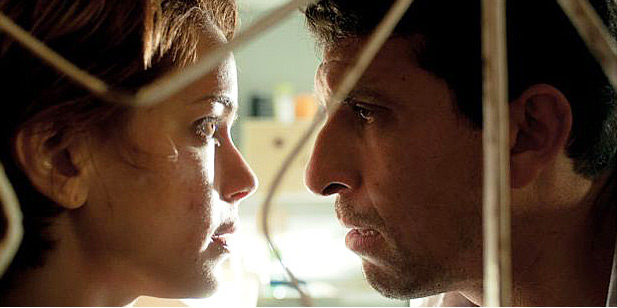
I’ll quote from my original post here: “If Prisoners met Little Children and were lured into a back alley by Alejandro González Iñárritu’s Biutiful, you might have a rough idea of what the Brazilian abduction film A Wolf at the Door is about. But even such a miasma of grim, adulterous, child-snatching malevolence would fall short of matching the depravity that exists in director Fernando Coimbra’s 2013 suspense tale.” Yeah, that pretty much sums up this slow-burn story of psycopathic lust, adultery, betrayal and murder. This is another one hidden deep in the Netflix archives that deserves much more attention.
GRADE: B+
IMDb: 7.5
-Sam Adams





